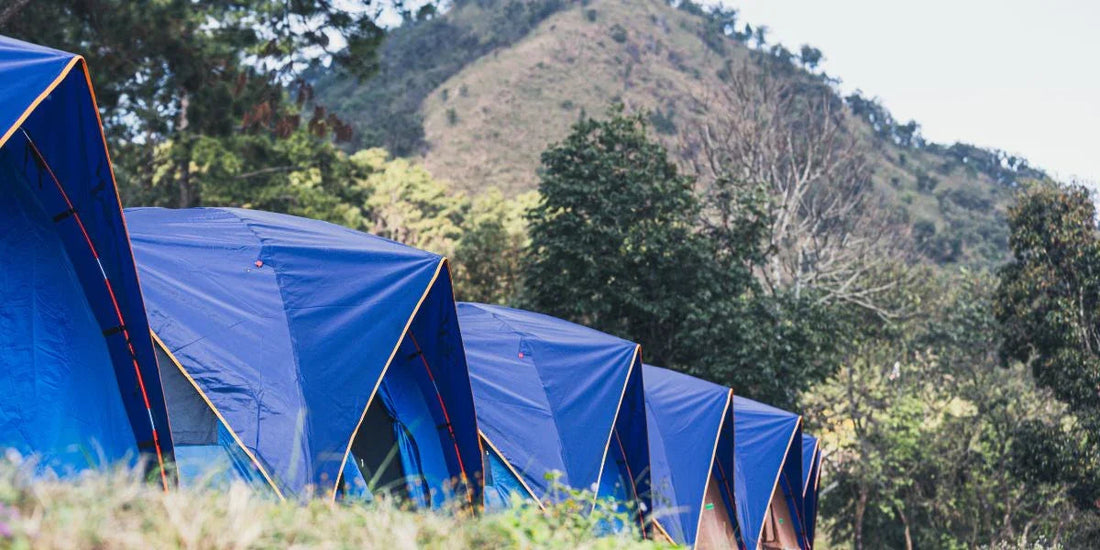
Poly, Canvas, or Vinyl? Here’s How to Pick the Right Tarp Without Guesswork
Share
When it comes to choosing a tarp, most buyers start with a simple question: Which material is best? But there’s no universal answer. The right tarp depends entirely on your use case—what you're covering, how long you need it to last, and the conditions it has to withstand. Poly, canvas, and vinyl tarps all serve different purposes, and choosing the wrong one can cost time, money, or protection.
This guide breaks down the practical differences so you can choose confidently—without second-guessing or overbuying.
Start with Purpose: What Are You Covering and Why?
Before looking at material types, get clear on how and where the tarp will be used. Are you covering construction equipment that stays outdoors long-term? Protecting supplies from rain during transport? Setting up a canopy for short-term shade?
The purpose will narrow your options significantly. Some situations call for breathability. Others need waterproofing. And in some cases, the strength of the material—against punctures, abrasion, or wind—matters more than anything else.
Poly Tarps: Lightweight, Cost-Effective, and Water-Resistant
Polyethylene tarps (poly tarps) are among the most widely used because of their versatility and affordability. These are made from woven polyethylene strips laminated with a waterproof coating on both sides. They are commonly used for temporary coverage, outdoor equipment, firewood piles, and general-purpose sheltering.
At Tarps Plus, we offer poly tarps in multiple grades—from light-duty blue tarps to high-density, UV-treated models in silver, white, and other colors. Heavier poly tarps have tighter weaves and thicker coatings, making them more durable and longer-lasting.
Best for:
-
Temporary outdoor cover
-
Emergency weather protection
-
Lightweight needs like camping, storage, or ground moisture barriers
Not ideal for: Long-term use in harsh conditions or where strength against tearing is critical.
Canvas Tarps: Breathable, Durable, and Built to Last
Canvas tarps are made from cotton duck fabric and treated for water resistance and mildew control. Unlike poly or vinyl, canvas allows for some airflow, which prevents condensation buildup. This makes them well-suited for covering machinery, tools, lumber, or any material that shouldn’t trap moisture.
Our canvas tarps come in treated and untreated options, with various weight and color choices. Treated canvas resists water and mildew, while untreated versions are often used indoors or for paint protection.
Best for:
-
Covering equipment or supplies that need ventilation
-
Agricultural and industrial applications
-
Long-term indoor or semi-covered outdoor use
Not ideal for: Fully waterproof needs or extremely wet environments. Canvas is water-resistant, not waterproof, and can absorb moisture over time.
Vinyl Tarps: Heavy-Duty, Waterproof, and Built for Harsh Conditions
Vinyl tarps are the most rugged of the three. Made from PVC-coated polyester, they’re engineered for tough environments—where strength, waterproofing, and abrasion resistance are non-negotiable. These tarps hold up against chemicals, oil, wind, and extreme cold or heat. They’re often used in industrial settings, trucking, roofing, and agriculture.
At Tarps Plus, we carry vinyl tarps in multiple thicknesses and finishes, including fire-retardant models that meet strict safety standards. These are commonly used where durability and compliance are critical.
Best for:
-
Industrial and commercial use
-
Long-term exposure to severe weather or chemicals
-
Roofers, truckers, or agricultural equipment protection
Not ideal for: Lightweight applications or where cost is a primary factor.
Still Not Sure? Match the Tarp to the Environment
Here are a few examples that might help narrow it down:
-
Short-term outdoor coverage for personal use: Go with a mid-grade poly tarp.
-
Covering heavy machinery stored in a barn: Use a treated canvas tarp for breathability.
-
Transporting heavy items across long distances in all weather: Choose a vinyl tarp.
-
Need fire-retardant material for jobsite compliance? Opt for vinyl or poly fire-retardant tarps.
Even within each category, details like weight (measured in oz./sq yd), color, UV protection, and grommet spacing can vary. These details matter—and they’re worth checking before placing an order.
How We Help You Choose with Confidence
With so many options, selecting the right tarp can feel like a guessing game. That’s why we make it easy to compare specifications side by side and offer detailed product breakdowns across every category. Whether you need a simple lightweight tarp or a custom heavy-duty cover, we’re here to help make the right match.
We stock a wide selection of poly, canvas, and vinyl tarps in different thicknesses, treatments, and colors. Every product is backed by experience from supplying tarps to industries ranging from construction to agriculture to emergency response. We don’t just sell tarps—we help solve problems.
Have questions or need help finding the right fit? Call 1-512-686-2302 to speak directly with our team. We’ll help you choose the material that performs the way you need—without overbuying or missing key specs.




